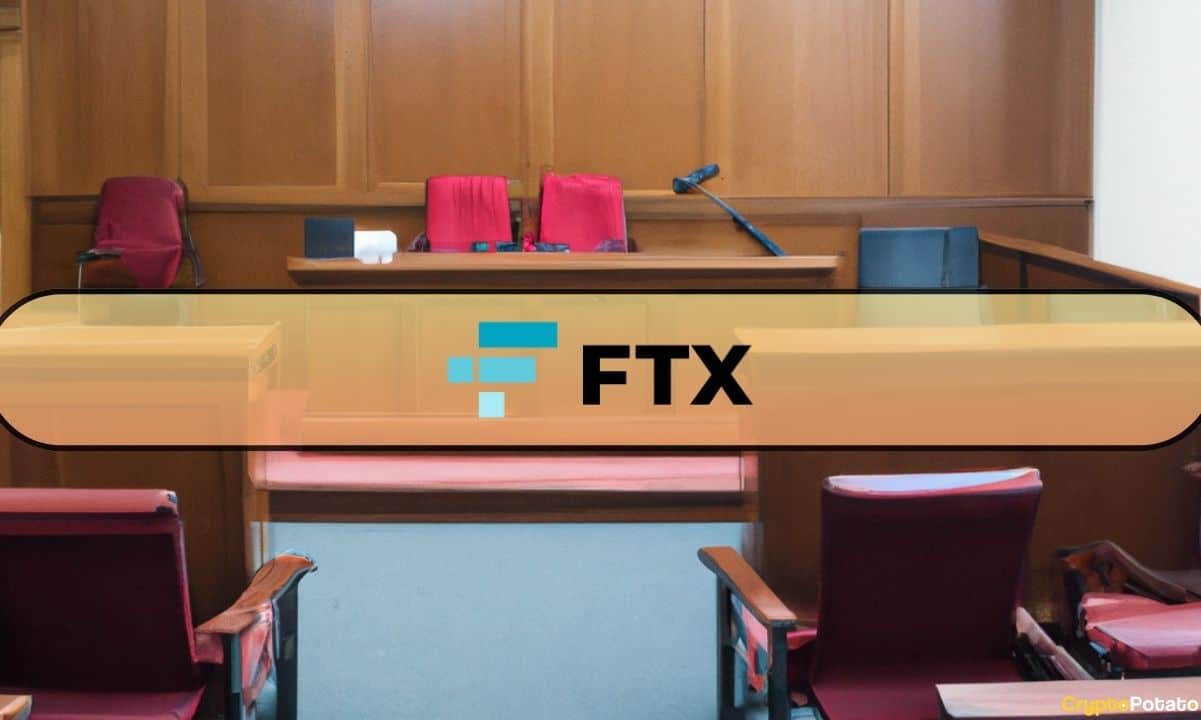Cryptocurrency
‘Massive’ crypto use cases to surface by 2030 — Coinbase exec

Coinbase launched Base, its new blockchain, in late July, and it has already become a major player among Ethereum-based layer-2 chains.
On Sept. 21, for instance, the chain notched some 677,000 transactions, with 870,163 “new addresses seen,” according to Etherscan.
By comparison, Arbitrum, a prominent layer 2 that launched in June 2021, had 925,000 transactions and 54,233 new addresses on the same day.
Base is now hosting hundreds of decentralized projects, Jesse Pollak, head of protocols at Coinbase, told Cointelegraph at Messari’s Mainnet conference in New York City on Wednesday, Sept. 20, including decentralized inflation oracles, restaurant rewards projects, an insurance aggregator and everything in between.
A major force behind the Base project, Pollak sat down with Cointelegraph at Mainnet for a Q&A encompassing Coinbase’s vision for its new platform, the rising promise of decentralized applications (DApps) and the evolution of blockchain technology.
Cointelegraph: You’ve said Base was created with a “clear vision: bring the next million builders and billion users on-chain.” Those are big numbers. How long will they take to achieve?
Jesse Pollak: It’s less about Base specifically and more about a billion users coming on-chain — embracing the power of this new platform [i.e., blockchain] that’s transparent, open, global — and developing apps that can improve people’s lives. Base is obviously going to play a big role in that, but it’s much bigger than just us. We really see our role as helping grow that pie.
CT: And the timeline?
JP: I see it happening this decade, i.e., one million developer jobs by 2030. There’s already been massive change in the 2020s — not just in the industry but the entire world. It’s going to happen faster than people might expect.
CT: What still needs to be done before we see mainstream adoption?
JP: Three high-level things need to happen. First, we need to make it cheaper for people to use these apps that are being built. We’ve done the first few orders of magnitude of cost reduction with Base. The same app might have cost $5 or $10 to use now costs 5 to 10 cents.
But we don’t think that’s enough. We really want to lower it so far that the cost is almost imperceptible to users.
Second, we want to make it easier for people to use these apps. A lot of that is building better wallet experiences.
Third, we need to have better identity infrastructure on-chain. Today, most consumer borrowing in the United States and other developed countries is under-collateralized borrowing in the form of credit cards or buy-now-pay-later arrangements. And almost none of this is possible on-chain now because we don’t have reliable identity systems.
So, to enable that next wave of big use cases, we’ll need lower costs, better wallets and better identity.
CT: You’ve said that what most people have done with crypto until now is speculate on the crypto markets, and it’s time to move on. Has it been a mistake to focus so much on the market price of Bitcoin, say?
Pollak: I don’t think it’s wrong if you look at the way that technology life cycles evolve. Carlota Perez, for instance, writes that financial bubbles are almost inevitable when you have meaningful technological innovation like the internet or electricity. You have this S-curve of adoption. [See chart below.] In the beginning, a lot of innovation is fueled by speculation as people see potential in the technology. This speculation draws in capital, which basically funds the innovation and eventually leads to impacts that change the world.

CT: Where are we now?
JP: We’ve reached the point where it’s time to move out of that [speculative] phase and into the phase of really bringing utility to everyday people. The infrastructure is ready.
Even two years ago, if you wanted to use an app on Ethereum, it was going to cost you $5 or $10 or $100. That’s just not something that is supportive of building everyday use cases.
CT: Speaking of Ethereum, why did Coinbase decide to build its layer 2 on the Ethereum blockchain? Did you ever consider using another mainnet?
JP: We actually looked three times at building a chain: In 2018 and 2020, and then most recently in 2023. And the first two times, we looked at building an alternative layer 1, one which would have been competitive with Ethereum. Our takeaway was we didn’t want to put ourselves on an island disconnected from the rest of the ecosystem.
The third time, we looked at all of the options: Ethereum, alternative layer 1s, layer 2s, etc. What felt natural to us about Ethereum was it is the largest crypto ecosystem by value, by activity, by developers — by order of magnitude or two — and so by building Base as an Ethereum layer 2, we could both contribute to scaling Ethereum and be a part of this ecosystem that’s larger than us.
CT: What about Ethereum’s oft-discussed scalability shortcomings, including network congestion and sometimes ballooning fees? Have those been largely solved through extensive use of layer-2 rollups like Optimism and Arbitrum (and now Base), where transactions are “batched” and added to the mainnet in a single lot?
JP: If you look at the history of Ethereum, the original vision was: We’re going to do all this at layer 1, and we’re going to scale up through sharding. But around 2020 and 2021, as layer 2s emerged, the Ethereum community and core development groups basically said: What if we changed our strategy where instead of trying to introduce all of this complexity at layer 1, we build the infrastructure to enable innovation at layer 2?
That was something that Vitalik [Buterin, Ethereum co-founder] wrote about a lot. And over the last two years, that’s what happened. Coinbase supported an initiative over the last year-and-a-half called EIP-4844, for instance, that introduced data availability for rollups, leading to reduced fees and more transaction throughput.
But do I think we’ve solved the problem? No. These things take years to solve, and I think we are now two to three years into making those investments, and we have another two to three years or more potentially to go. But I think we’ve made a lot of progress.
You can see this at L2Beat. [See chart below]. Two years ago [Sept. 21, 2021], there were eight transactions per second [on average] on layer-2 projects and 13 TPS on the Ethereum mainnet. Today, there’s 58 TPS on layer 2s and 11 TPS on the Ethereum mainnet. So we’ve gone from less than 1x to 5.7 times faster in two years.

CT: Are you surprised that a “buzzy” social media DAPP — Friend.tech — was initially Base’s biggest performer after its summer launch? Its fees surpassed $1 million in one 24-hour period. Still, maybe this wasn’t the serious use case that some critics were hoping for.
JP: Well, when the first social apps launched on the internet, some people looked at them and said, hey, these things are toys. When are we going to go do the serious stuff like bringing newspapers online? If you look at where we are today, social apps are used by billions of people every day. They will continue to be a way that people connect, and social apps will play a critical role on-chain.
What’s powerful about this next generation of on-chain social apps is that they will enable people to have sovereign ownership. They will continue to own their creativity, and they’ll continue to be in control — rather than the large corporations that are controlling them now.
CT: Can you tell us about a DApp launched on Base that excites you?
JP: Check out Blackbird, a customer engagement platform for restaurants. You walk into any participating restaurant, you tap your phone, and it instantly knows who you are. They customize the experience for you. Repeat visitors can earn rewards. It’s in 10 or 15 restaurants now in New York City but is soon expanding into California. A lot of people are talking about it on Twitter.
CT: Where will blockchain finally find its “killer app” — to do for the cryptoverse what email did for the internet? Or has it already emerged in your view?
JP: There won’t be one killer app. There will be many killer apps. We’re starting to see some of those emerge. The one with the most real-world adoption is stablecoins. If you look at the total volume of stablecoin transactions over the last year, it’s a massive number. It will be a big driver of economic freedom in the decade ahead. It gives people in places like Argentina or Turkey access to a stable currency like the U.S. dollar.
But stablecoins won’t be alone. We will see many on-chain applications that will change people’s lives for the better.
Collect this article as an NFT to preserve this moment in history and show your support for independent journalism in the crypto space.
Cryptocurrency
FTX Wants to Block Claims from 49 Countries, Including China: Users Rage

Bankrupt crypto exchange FTX is asking the court to greenlight a plan that could potentially deny billions in creditor repayments to users in 49 countries where crypto faces legal restrictions.
This could disproportionately impact Chinese users, who reportedly represent 82% of the affected claim value.
Navigating Legal Minefields in Restricted Jurisdictions
The FTX proposal, detailed in a July 2 court filing, is seeking authorization to designate 49 countries, including China, Russia, Afghanistan, and Ukraine, as “Potentially Restricted Jurisdictions.”
While claims from these regions will be automatically treated as “disputed,” the FTX Trust will first seek legal opinions for each jurisdiction, and in cases where distribution is deemed legally permissible, payouts will proceed.
However, where legal advice indicates distributing funds would violate local laws, the Trust will issue a formal notice to affected creditors. These users will then have a 45-day window to file a formal objection, including submitting it to a U.S. court.
According to the document, if a jurisdiction is ultimately deemed “restricted” and a claimant remains a resident there when repayments are processed, their funds and any associated interest “shall be immediately forfeited and revert to the FTX Recovery Trust.”
The submission has triggered significant backlash from affected users. While the FTX Recovery Trust is positioning it as a legal compliance issue, others argue it raises serious ethical questions.
“FTX accepted users from China when things were fine,” wrote one X user. “Now denying their claims entirely because of ‘restricted jurisdiction’ feels unfair.”
He described creditors from the beleaguered countries as “victims” who still deserved to be repaid.
Another Chinese claimant, going by the username “Will,” also argued forcefully against the rationale:
“While mainland China does not support cryptocurrency trading, residents… are allowed to hold cryptocurrencies… The claims process uses USD for settlement… they are allowed to hold USD overseas. So why isn’t wire transfer settlement supported?”
Meanwhile, others expressed despair, with one user asking, “Is there anything that could be done? Or they just steal all of the money?” FTX creditor advocate Sunil suggested that selling or transferring the claim to someone in an allowed jurisdiction might be a potential workaround.
Ongoing Repayments
While the controversy rages on, other creditors have been making progress with their payments. As per a July 1 update, those with claims under $50,000 have already received 120% payouts, while larger claimants received 72.5% in May. The remaining 27.5% is expected through distributions extending into 2027.
Meanwhile, the fallout from FTX’s 2022 collapse continues to resolve elsewhere, with most celebrity endorsement lawsuits dismissed, though retired NBA star Shaquille O’Neal settled for $1.8 million.
Binance Free $600 (CryptoPotato Exclusive): Use this link to register a new account and receive $600 exclusive welcome offer on Binance (full details).
LIMITED OFFER for CryptoPotato readers at Bybit: Use this link to register and open a $500 FREE position on any coin!
Cryptocurrency
This Critical Binance Metric Suggests Incoming Surprises for Bitcoin: What You Need to Know

Binance’s net taker volume surged past $100 million just ahead of the latest US Nonfarm Payrolls (NFP) report.
Such a trend points to aggressive buying as traders position for a key macroeconomic catalyst.
Binance Sees Aggressive Buy Orders
In its latest analysis, CryptoQuant revealed thaft this spike reflects large market buy orders on Binance, indicating strong bullish sentiment or speculative bets on continued market momentum.
The US labor market report, released shortly after, showed Nonfarm Payrolls increasing by 147,000 in June. This figure exceeded analysts’ expectations of 110,000-118,000. The unemployment rate also fell to 4.1% from 4.2% in May and was the lowest level since February, according to the Bureau of Labor Statistics.
The stronger-than-expected employment data reduces the chances of near-term rate cuts, ultimately backing the Fed’s plan to maintain higher rates to control inflation. Market-implied probabilities now reveal a 95% chance the Fed will hold rates steady at its July meeting, as it rose from 75% before the jobs report was released.
A resilient jobs market has strengthened the US dollar, as expectations of delayed or reduced interest rate cuts make the currency more attractive relative to others.
Historically, strong NFP data and hawkish Fed expectations have weighed on risk assets, including Bitcoin, as a firmer dollar environment tends to reduce the relative appeal of alternative assets.
The combination of Binance’s aggressive buy-side activity and the strong jobs report could pave the way for potential volatility in crypto markets as traders assess the Fed’s policy outlook and the broader macro environment.
After US jobs data beat forecasts, Bitcoin briefly climbed above $110K before retreating to $108.8K.
July Seasonality Fuel Optimism
As per crypto analyst Daan Crypto Trades’ observation, holding above $108K is critical for the leading crypto asset to avoid a downward spiral. He considers a close near the $110K region a healthy sign.
Meanwhile, Matrixport noted that July has historically been a strong month for Bitcoin, as 7 out of the last 10 Julys have closed positively and have an average return of over 9.1%. Supported by the improving Fed outlook and post-July 4 optimism, the next few weeks could offer a final push higher before another round of consolidation. The Greed & Fear Index is also bottoming out, a signal that often precedes upward momentum in Bitcoin’s price.
Binance Free $600 (CryptoPotato Exclusive): Use this link to register a new account and receive $600 exclusive welcome offer on Binance (full details).
LIMITED OFFER for CryptoPotato readers at Bybit: Use this link to register and open a $500 FREE position on any coin!
Cryptocurrency
Chainlink’s Consolidation Echoes Bitcoin’s 2023 As Retail Apathy Meets Whale Hunger

Chainlink (LINK) remains locked in a $12-$15 price stalemate, owing to the continued whale accumulation amid retail disengagement.
On-chain data shows sustained negative exchange netflows of around 100,000 LINK per week, which indicates that whale entities are absorbing sell pressure without significant price disruption.
LINK Faces Critical Test
CryptoQuant stated that this trend contrasts with occasional retail-driven spikes, such as March 2025’s 5 million LINK deposit surge. Retail activity has stayed flat, as evidenced by the daily active addresses hovering between 28,000 and 32,000, while transaction counts remain stagnant at around 9,000 per day. Despite increased oracle utility, retail failed to capitalize on a minor activity bump seen in late 2024.
Whale urgency is evident as exchange withdrawals peaked at 3,000 transactions per day in Q4 2024 and remain elevated, thereby steadily draining exchange reserves, which have fallen approximately 40% year-to-date. Neutral leverage metrics are preventing volatility and have allowed systematic accumulation without triggering a breakout above $15.
A resolution to this deadlock will require a spike in retail participation to ignite momentum or a slowdown in whale withdrawals to weaken accumulation. Until a catalyst emerges, LINK’s structure matches Bitcoin’s 2023 consolidation phase before its surge in 2024.
While this accumulation standoff continues on-chain, Chainlink has been expanding its broader ecosystem through partnerships.
Collaborations With Mastercard and Visa
Last month, the decentralized oracle network partnered with Mastercard to allow 3 billion cardholders to purchase crypto directly on-chain using fiat payments. The collaboration utilizes interoperability infrastructure and Mastercard’s global network to remove barriers to crypto access.
Partners like Zerohash, Shift4, Swapper Finance, and XSwap support liquidity, compliance, and fiat-to-crypto conversion, bridging traditional payments with decentralized finance environments.
Chainlink also completed a pilot under the HKMA’s e-HKD+ initiative with Visa, wherein the duo tested cross-border investment transactions using CBDCs and stablecoins. In the trial, ANZ’s AUD-backed stablecoin A$DC was converted into e-HKD and used to invest in a tokenized money market fund.
Chainlink’s CCIP enabled asset transfers between ANZ’s private blockchain and Ethereum’s public testnet, while Visa’s VTAP managed the token lifecycle. The pilot demonstrated instant, compliant investment fund access, which reduced settlement times from days to just seconds, even on weekends.
Binance Free $600 (CryptoPotato Exclusive): Use this link to register a new account and receive $600 exclusive welcome offer on Binance (full details).
LIMITED OFFER for CryptoPotato readers at Bybit: Use this link to register and open a $500 FREE position on any coin!

 Forex3 years ago
Forex3 years agoForex Today: the dollar is gaining strength amid gloomy sentiment at the start of the Fed’s week

 Forex3 years ago
Forex3 years agoUnbiased review of Pocket Option broker

 Forex3 years ago
Forex3 years agoDollar to pound sterling exchange rate today: Pound plummeted to its lowest since 1985

 Forex3 years ago
Forex3 years agoHow is the Australian dollar doing today?

 Cryptocurrency3 years ago
Cryptocurrency3 years agoWhat happened in the crypto market – current events today

 World3 years ago
World3 years agoWhy are modern video games an art form?

 Commodities3 years ago
Commodities3 years agoCopper continues to fall in price on expectations of lower demand in China

 Economy3 years ago
Economy3 years agoCrude oil tankers double in price due to EU anti-Russian sanctions























